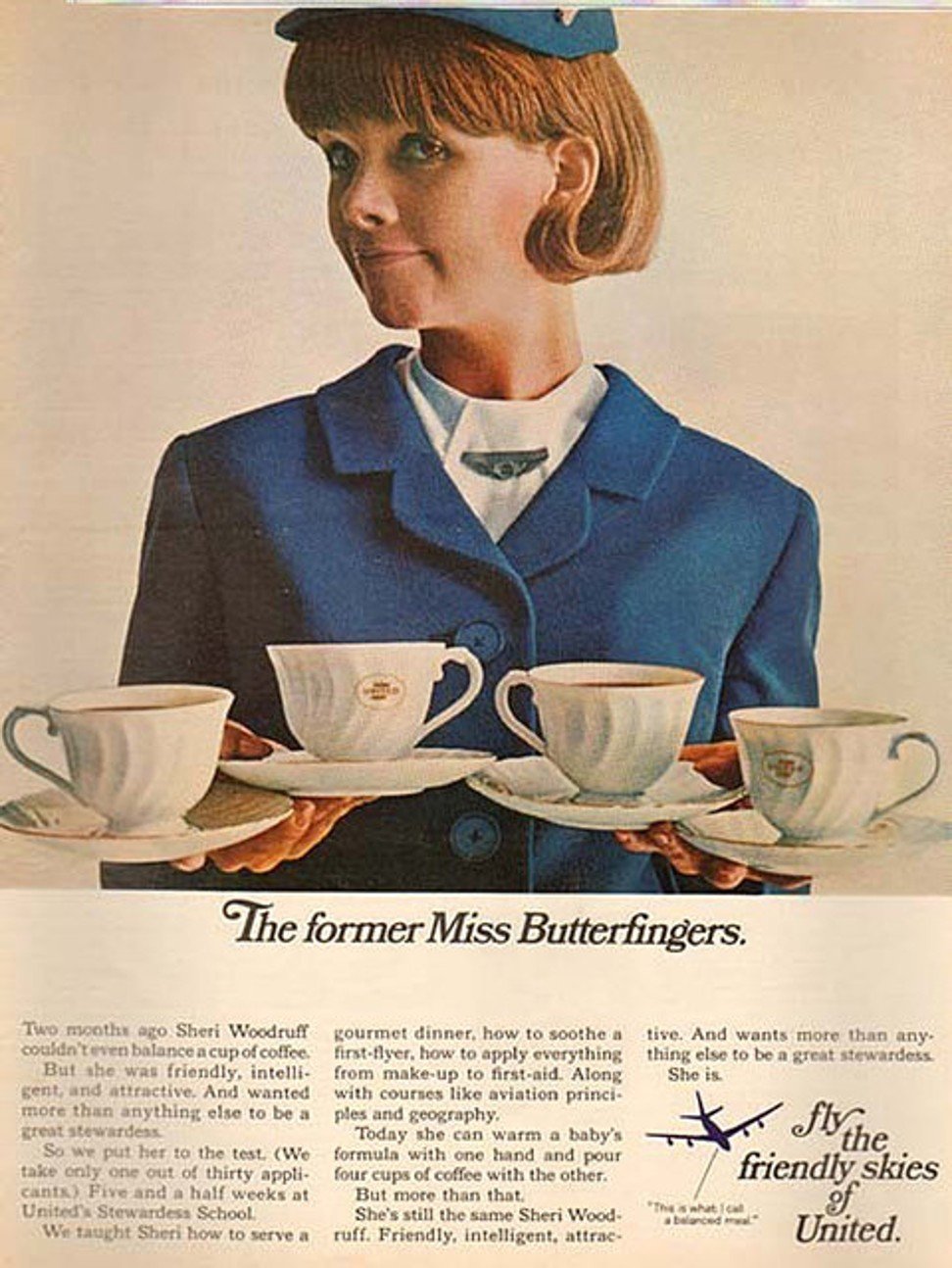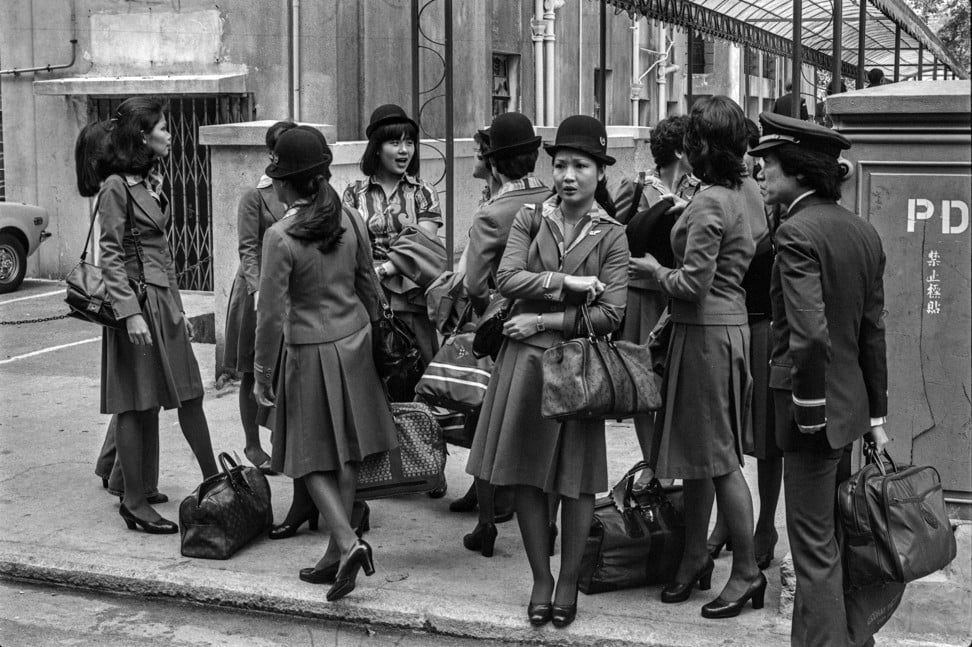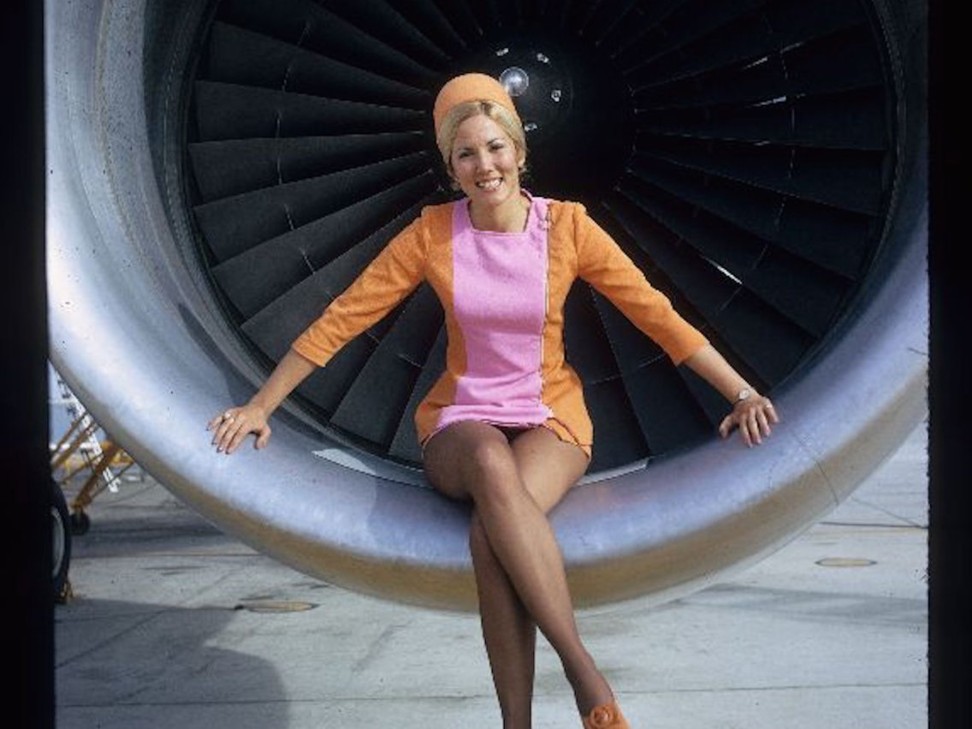How air stewardesses became flight attendants – and how gender equality took to the skies

From the feminist movement to 9/11, the past 50 years drastically changed the role of flight attendants.
Being a flight attendant half a century ago may have seemed glamorous, but the industry was ripe with discrimination and sexism.
While many flight attendants worked to overcome these issues, challenges remain in the industry, including depreciating pay and a lack of racial diversity.

Here’s how being a flight attendant has changed in the past 50 years.
Flight attendants are responsible for passenger safety and comfort during the duration of their air travel. They attend to traveller needs, and may need to administer medical care. They don’t require more than a high school education for the role, but can complete additional training or certification if needed.
Back in the day, “stewardesses” would start working at 18 or 20 before going off to college or getting married. In fact, marriage could disqualify some women from landing the job, according to former stewardess Diane Hansen.

In 1968, however, federal courts struck down rules that forbade flight attendants from being married. In 1970, airlines withdrew restrictions against flight attendants being pregnant.
Now, the average flight attendant is 46 years old. While 80 per cent of flight attendants were younger than 35 in 1980, half of all cabin crew were 45 years or older as of 2007.
Fifty years ago, flight attendants faced overt sexism on the job. After airlines experienced a sharp drop in profits in the early 1970s, jets competed for business passengers by having stewardesses wear tight clothes, and they used provocative ads to highlight the practice.

Stewardesses had to submit to hairdo inspections and make sure their legs were shaved. They would have to wear high heels and a dress just to pick up pay cheques. Women could even be fired for weighing 2 pounds over the airline limit.

Beginning in the late 1960s, flight attendants became leaders in the rising feminist movement. In 1972, two women launched the Stewardesses for Women’s Rights, which fought sexism through legal action.
The early ’70s also marked a new era for male flight attendants, when the Supreme Court ruled airlines could not discriminate against men.
In the 1980s, airlines stopped using the term “stewardess” in favour of the gender-neutral “flight attendant”.

Racial diversity in the industry began mid century. Ruth Carol Taylor became the first black flight attendant in 1958, after filing a complaint against Trans World Airline (TWA) for racial discrimination. Regional carrier Mohawk Airlines eventually hired her.
Yet the journey wasn’t easy for minority flight attendants. Casey Grant, one of the first black stewardesses hired by Delta Air Lines in 1971, said passengers refused to acknowledge her and she couldn’t always get hotel rooms between flights.
Today, American flight attendants are still overwhelmingly white. Just 14.2 per cent of flight attendants are black, while only 6 per cent are Asian.
The terrorist attacks on September 11, 2001, also changed how flight attendants do their jobs. Some now learn karate during training, and how to check for suspicious passenger activity.
Many flight attendants faced post-traumatic stress disorder and reported high stress following the 9/11 attacks, according to a study from the National Institutes of Health.
Flight attendants make less money now than they used to. Median hourly wages dropped by 26 per cent between 1980 and 2007, while median hourly wages of all US workers rose by 13 per cent during this period.

Flight attendants today earn an average of US$48,874, about US$3,000 less than the average American salary, according to Data USA.
Flight attendants also aren’t paid for delays on flights or commuting to the airport; their pay time starts as soon as the aircraft door shuts. People have said they work overtime to afford their bills, or sometimes qualify for food stamps.
Despite the challenges flight attendants face, the job is expected to grow as airlines continue to replace smaller aircraft with new larger planes that can accommodate a greater number of passengers.
Want more stories like this? Sign up here. Follow STYLE on Facebook, Instagram and Twitter
This article originally appeared on Business Insider.

- Stewardesses were once forbidden from getting married